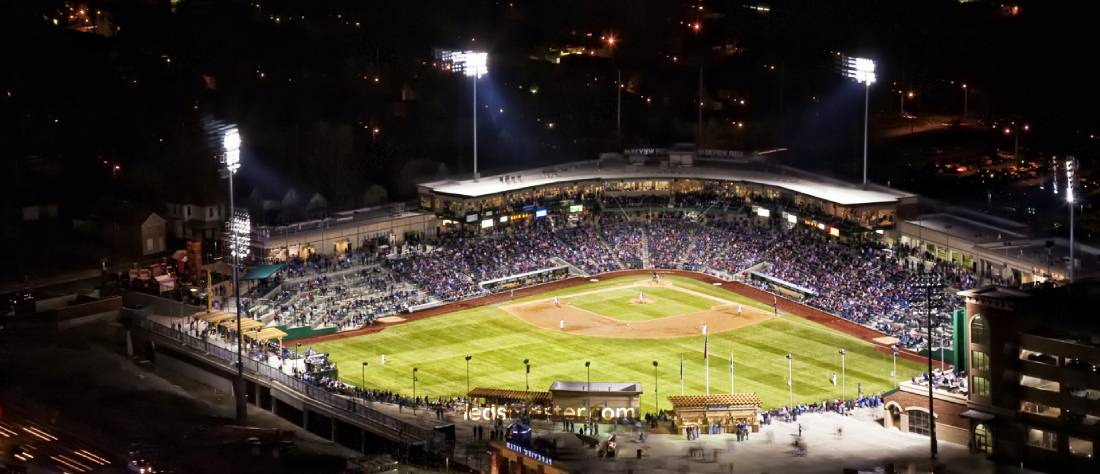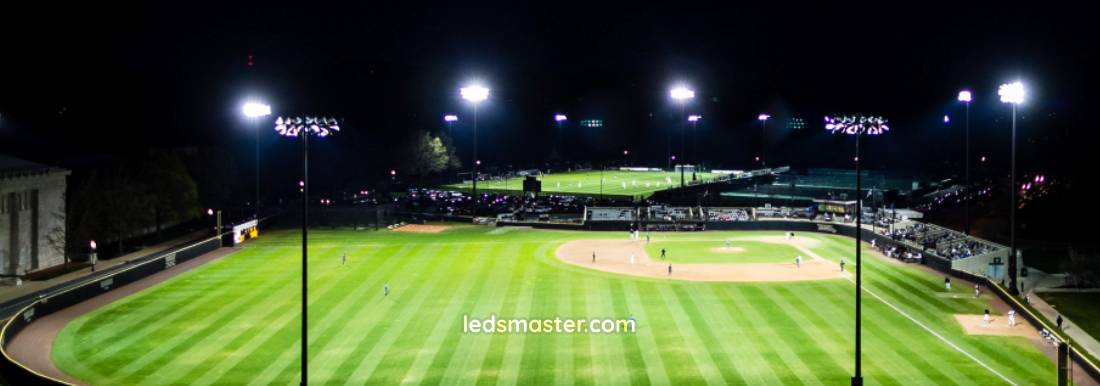Imagine stepping onto the softball field for a night game, where every corner is brilliantly illuminated, and the action is crystal clear. Whether you’re a player diving for a catch or a fan cheering from the stands, great lighting makes all the difference. If your field’s lighting is starting to fade, it might be time for an upgrade—one that saves energy, cuts costs, and transforms your game experience. Ready to discover why replacing softball field lighting is a game-changer? Let’s dive in!
Get your complimentary lighting design today
Like all infrastructure, lighting systems on softball fields eventually require upgrades or replacement. Whether the lighting system is outdated, inefficient, or prone to malfunctions, replacing softball field lighting offers numerous benefits. This article explores the reasons for replacing softball field lighting, the advantages of doing so, the energy savings from newer lighting technologies, and other relevant considerations.
Table of Contents
ToggleOne of the primary reasons for replacing softball field lighting is outdated technology. Many older softball fields still rely on traditional lighting solutions, such as metal halide or high-pressure sodium lamps. These older technologies not only consume more energy, but also provide uneven lighting distribution and reduced brightness over time. The illumination on the field may become dim, making it harder for players and spectators to see clearly. The increasing availability of advanced LED lighting systems has made it feasible for facility managers to upgrade, ensuring modern standards for brightness and efficiency are met.
As lighting systems age, the cost of maintaining them can become excessive. Older lighting setups may require constant repairs, from bulb replacements to fixing electrical issues. This adds to both the labor costs and the downtime of the field, which can result in lost revenue for venues hosting games and tournaments. Furthermore, the wear and tear on the lighting infrastructure can lead to inconsistency in performance, with some areas of the field being improperly lit or suffering from light flicker. By replacing aging systems with modern lighting technology, maintenance costs are significantly reduced, and the need for constant repairs becomes less frequent.

Traditional lighting systems are notorious for being energy hogs. Many softball fields equipped with older lighting solutions use high amounts of electricity, driving up energy costs. With growing awareness of energy conservation and increasing electricity prices, replacing energy-inefficient lighting systems with more efficient solutions has become a priority for facility managers. Newer lighting systems, especially LED technology, consume far less energy while delivering superior brightness and coverage, which not only benefits the environment but also lowers operational costs for field owners.
Visibility is paramount in any sporting event, and this is particularly true in softball. Replacing outdated or malfunctioning lighting with newer, more advanced systems can drastically improve visibility on the field. LED lighting, for example, offers a higher level of brightness and uniform light distribution across the field. This ensures that every part of the softball field, from the outfield to home plate, is illuminated evenly, reducing shadows and dark spots that can pose risks to players. Proper lighting enhances player safety by allowing them to see the ball clearly during fast-moving plays, preventing injuries and improving overall gameplay.
Good lighting not only benefits the players but also enhances the experience for spectators. When softball field lighting is evenly distributed, it ensures that fans can see the action clearly from every angle of the field. With improved lighting, fans can enjoy a more engaging and immersive viewing experience, making the game more exciting. Additionally, the enhanced quality of lighting makes night games more enjoyable for families and communities, encouraging larger crowds to attend games, which can boost the financial viability of hosting nighttime events.
New lighting systems, particularly those using LED technology, offer increased longevity compared to traditional lighting solutions. LED fixtures can last up to 100,000 hours or more, whereas older lighting solutions may require frequent bulb replacements. The long lifespan of LED systems translates into fewer interruptions and reduced downtime for lighting repairs. Moreover, LED lights are designed to withstand the outdoor elements, including extreme weather conditions such as rain, snow, and high winds. This makes them more durable and resilient compared to older technologies, further reducing the costs associated with replacing bulbs or fixtures.
One of the most significant benefits of replacing softball field lighting is the potential for energy savings, particularly when switching to LED technology. LED lights are far more energy-efficient than traditional metal halide or high-pressure sodium lamps, consuming up to 75% less energy. The lower energy consumption is not just an economic benefit but also an environmental one, as it reduces the overall carbon footprint of the softball field. Additionally, LED lights generate less heat compared to traditional lighting, reducing the strain on the field’s electrical system.

Replacing outdated lighting with energy-efficient LED systems can lead to significant reductions in energy costs. For softball fields that host frequent games and practices, these savings can add up quickly. By using less electricity to illuminate the field, the overall operational costs decrease, freeing up resources for other investments, such as equipment upgrades, field maintenance, or facility improvements. Energy savings can be especially impactful for larger sports complexes with multiple fields, where the cumulative savings across all fields can result in substantial cost reductions.
Modern lighting systems often come equipped with smart controls, which allow for additional energy savings. These smart controls include features such as dimming capabilities, motion sensors, and scheduling systems that optimize energy use based on the field’s needs. For example, lighting can be dimmed or turned off during non-game hours or automatically adjusted depending on the natural light conditions. This ability to precisely control the lighting output reduces waste, ensuring that lights are only being used when needed and at the correct intensity. The combination of smart lighting controls and energy-efficient lighting fixtures can drastically reduce overall energy consumption.
When replacing the lighting system for a softball field, it’s essential to ensure that the new installation complies with current lighting standards and regulations. Sports field lighting often has specific requirements regarding brightness levels, uniformity, and glare reduction to meet both safety and environmental concerns. Upgrading the lighting system ensures compliance with these regulations, preventing potential issues with safety or regulatory bodies. It also ensures that the field can be used for a wide range of events, including competitive tournaments, which often have stringent lighting requirements.
Modern lighting solutions, especially LEDs, are more environmentally friendly than traditional lighting systems. LED lights contain no hazardous materials, such as mercury, and their long lifespan reduces the frequency of wasteful replacements. Moreover, the energy savings from using LED systems contribute to a reduction in greenhouse gas emissions, making softball fields more sustainable. For organizations or municipalities aiming to reduce their environmental impact or pursue green certifications, upgrading to energy-efficient lighting systems is a major step toward these goals.
Older lighting systems often contribute to light pollution, as their beams can spill beyond the field and into surrounding areas. This not only disturbs nearby communities but also contributes to environmental issues, such as disturbing wildlife and wasting energy. Modern lighting systems, particularly LED lights, are designed to provide better control over light distribution, reducing spillover and focusing the light exactly where it’s needed. This minimizes light pollution, enhancing the experience for the local community and ensuring that the field remains in harmony with its surroundings.
Replacing softball field lighting is a valuable investment for both facility managers and the broader community. From improved visibility and player safety to enhanced energy efficiency and reduced environmental impact, the benefits of upgrading lighting systems are clear. New lighting technologies, such as LED systems, offer long-term cost savings, better durability, and superior performance compared to outdated solutions. Additionally, by complying with modern lighting standards and incorporating smart lighting controls, softball fields can ensure they provide an optimal experience for athletes, spectators, and facility operators alike.